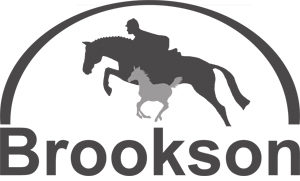Goal Setting
The Importance of Goal Setting for Horseback Riding
Goal setting plays a crucial role in horseback riding for several reasons:
- Clarity and Focus: Setting clear goals helps riders define their aspirations and focus their efforts. It provides a sense of direction and purpose, allowing them to concentrate their energy on specific areas of improvement.
- Motivation and Commitment: Goals act as motivators, igniting passion and commitment in riders. They provide a sense of purpose, pushing individuals to overcome challenges and persevere through setbacks, ultimately fueling their progress.
- Measuring Progress: Goals serve as benchmarks for measuring progress. By setting specific, measurable, achievable, relevant, and time-bound (SMART) goals, riders can track their advancements and celebrate milestones along the way. This tracking helps maintain motivation and provides a sense of fulfillment.
- Guidance and Planning: Setting goals helps riders create a roadmap for their equestrian journey. It allows them to identify the necessary steps, resources, and training required to reach their objectives. By having a plan in place, riders can make informed decisions, prioritize their efforts, and make the most of their time and resources.
- Personal Growth and Development: Goal setting promotes personal growth and development. It challenges riders to step out of their comfort zones, acquire new skills, and expand their horizons. The pursuit of goals fosters self-discipline, resilience, and a continuous learning mindset.
- Enhanced Partnership with the Horse: Goal setting is not limited to the rider; it extends to the horse as well. By setting goals, riders can establish a deeper connection with their equine partners, working together towards shared achievements. This collaborative approach strengthens the bond and mutual trust between rider and horse.
In summary, goal setting is vital for horseback riding as it provides direction, motivation, measurement, guidance, personal growth, and fosters a harmonious partnership between rider and horse. It empowers riders to make meaningful progress, achieve their dreams, and experience the joy of equestrian success.
Other things to consider;
When pursuing your goals, it’s natural to encounter certain barriers that may impede your progress. These hurdles can take various forms, such as fears, apprehensions, feelings of unpreparedness, or communication challenges. Take a moment to reflect on the following questions:
Are there any specific worries or fears that hold you back from taking action towards your goal?
Do you feel adequately prepared to tackle the challenges that may arise along the way?
Is there any aspect of communication that you find difficult or need assistance with in order to move forward effectively?
Understanding and addressing these potential barriers will empower you to devise strategies and seek support to overcome them.
Remember, acknowledging and tackling obstacles is an integral part of the journey towards achieving your goals.
Goal Setting Form
Coaches Collaborating to Foster Rider Development and Goal Achievement
This form has been designed to facilitate a joint review by our coaches, enabling them to work together towards developing riders and helping them realize their goals. It is open to all riders who aspire to compete in the future. By submitting this form, riders express their intentions and set the stage for a collaborative journey towards competitive success.
Here are some examples to help you think through goal setting.
| Long Term Goal | Current | Short Term Goals |
|---|---|---|
| Compete at a show in the cross rails. | Walking and trotting in lessons. | – Learn to canter – Be able to steer over poles – Jump a jump – Jump a course of cross rails at home |
| Compete at bronze hunter shows | Jumping courses at home | – Lease a horse – Be able to make simple lead changes – Utilizing the whole ring – Able to count strides |
| Qualify for championships | Showing on the silver circuit with a lease horse. | – Compete at silver shows – Find all my distances in a class – Make flying lead changes at the right time – Maintain a consistent pace around the course – Stay straight in the lines |
| Qualify for the Royal | Showing on the gold circuit with a lease horse. | – Compete at gold shows – Have consistently accurate rides – Lesson three times a week and ride 5 days a week – Pin in the top three of your classes regularly |
| Move into the jumper ring | Showing in the hunters | – Be able to be accurate to jumps – Be able to make tight turns and maintain your canter in a safe way – Be able to gallop jumps – Remember my courses |
